pup joint yield strength free sample
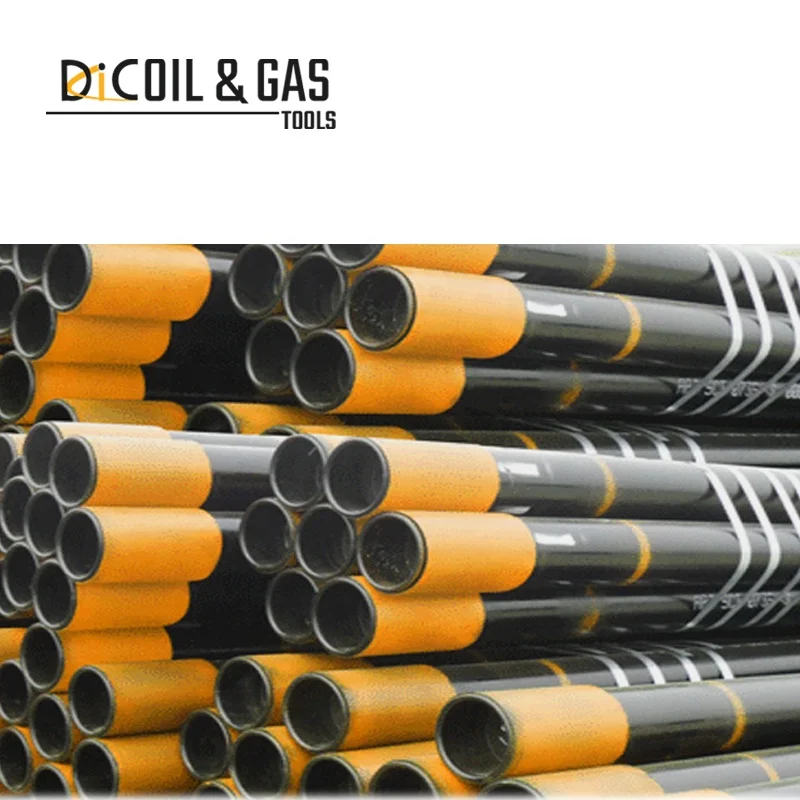
A pup joint is Casing, Pipe or Tubing shorter in length than a standard tubular string. This allows for the adjustment and installation of tools and various tubular components when placement downhole is critical for a specific project. A Spacer Pipe is another reference used to identify pup joints. Pup joint features consist of connections, lengths, weights and material grade.
Crossover pup joints are manufactured from seamless mechanical tube. As with all Crossover products, each piece is marked with a distinctive job number and heat number that is fully traceable. A complete range of sizes (1" to 4.5"), weights (standard or heavy wall), and grades (J-55, N-80, L-80, and P-110) are commonly available from stock in 2", 3", 4", 6", 10", and 12" lengths. Lengths up to 20" are available upon request.
Seamless pup joints with premium connections are available in API and exotic alloy grades. Premium ends are threaded by the manufacturer or authorized licensee.
Available with standard or special perforation spacings. Each joint has four rows of ⅜ inch holes drilled longitudinally along the tube. Optional patterns, hole size, and lengths furnished upon request.
A blast joint is shorter in length than standard tubular joint. Built with a heavy wall pipe it is incorporated in the production string to facilitate production across any perforated interval and zone. Blast Joints are manufactured to the following specs connections, lengths, weights and material grade.
Crossover Blast Joints are heavy wall pin by box connectors used in tubing strings and are designed to minimize the effect of external erosive action caused by production fluids. Blast joints are located opposite the location of perforations in the production casing or just below the tubing hanger in sand frac designs. Crossover blast joints are manufactured from seamless mechanical tube in sizes ranging from 2 3/8” to 4 1/2” OD. Any length, grade of material, and threading is available at the customers request. Typical lengths are 10" and 20". Both API and Premium threads are available.
Crossover Coarse Thread Tubing Safety Joint provides for emergency recovery of the major portion of the tubing string should it become necessary to abandon the equipment below. Precision left-hand threads facilitate the release of the joint by right-hand tubing rotation. Equipment requiring right-hand rotation should not be used below the Safety joint.
Crossover Straight-Pull/Shear-Out Safety Joint is used between packers in dual and triple completions and in selective completions using Hydrostatic Single-String Packers. It is also used when rotational releasing is not desired. When ran above the upper packer in a single-string completion, however, the shear value should be adjusted to compensate for any hydraulic conditions that exist when the string is landed, or that are created by well treating operations. They are available in keyed and non-keyed configurations.
Crossover rotary shoes are manufactured from specially tempered steel to provide the ultimate in toughness and durability. They are used to cut a clearance between the fish and the wall of the well bore. Each shoe is tailored to fit a particular downhole need and normally is run on the bottom of one or more joints of washover pipe. Shoe design is dictated by whether it cuts on the bottom, on the OD, on the ID, or any combination of these. When hole sizes permit, additional clearances can be cut using side ribs, thus providing greater circulation.

Casing or Tubing Pup Joints at Group 1, J55/PSL 1, K55/PSL 1, N80(1)/PSL 1; Manufacture Accessories at Group 1, J55/PSL 1, K55/PSL 1, N80(1)/PSL 1; Threader.
Casing or Tubing Pup Joints at Group 1, J55/PSL 1, K55/PSL 1, N80(1)/PSL 1; Manufacture Accessories at Group 1, J55/PSL 1, K55/PSL 1, N80(1)/PSL 1; Threader.
Summary of Product Specification Level (PSL) RequirementsJ.1 GeneralThis informative annex is provided for the convenience of the user of this standard and identifies the places whereadditional requirements are detailed when product is ordered to PSL-2 or PSL-3.Detailed requirements are given in the sub-sections indicated in square brackets [ ] after each item.The PSL-3 requirements are in addition to the PSL-2 requirements.There are no PSL-2 or PSL-3 requirements for Grade H40.J.2 Grades J55 and K55J.2.1 PSL-2The following requirements shall be satisfied:a) Full-body, full-length heat treatment (after upsetting if applicable) [H.2.1].b) Mandatory Charpy V-notch impact testing and requirements (according to K.9 (SR 16)) [H.6.2.1].c) No product to be susceptible to having material detach during make-up (appropriate processing or abrasiveblasting) [H.10 and H.12].d) Seal-ring groove machining and tolerances [H.11].e) Metallographic examination of the weld zone [H.15].f) Alternative test pressures for Label 1 larger than 9 5/8 [H.16].g) Wall thickness measurement with 25 % coverage [H.17.1].h) NDE for longitudinal internal and external defects to acceptance level L4 [H.18.1.1].i) K55 only: Ultrasonic testing of the weld seam after hydrotest [H.18.2].j) Seal-ring to be shipped separately [H.19].J.2.2 PSL-3The following requirements shall be satisfied:a) Wall thickness measurement with 100 % coverage, report the minimum wall thickness [H.17.2].b) NDE for longitudinal and transverse, internal and external defects to acceptance level L2 (no MPI) [H.18.1.4].c) NDE of pipe ends after end finishing [H.18.3].J.3 Grades N80, (all types)J.3.1 PSL-2The following requirements shall be satisfied:a) Charpy V-notch impact shear area minimum of 75 % [H.6.1].b) Mandatory Charpy V-notch impact testing and requirements (according to K.9 (SR 16)) [H.6.2.1].c) No product to be susceptible to having material detach during make-up (appropriate processing or abrasiveblasting) [H.10 and H.12].d) Seal-ring groove machining and tolerances [H.11].e) Tensile test frequency as for Grade L80 [H.13].f) Metallographic examination of the weld zone [H.15].g) Wall thickness measurement with 25 % coverage [H.17.1].h) NDE for longitudinal and transverse, internal and external defects to acceptance level L3 (no MPI) [H.18.1.2].i) Seal-ring to be shipped separately [H.19].J.3.2 PSL-3The following requirements shall be satisfied:a) Only grade N80Q shall be furnished for PSL-3 [H.2.2].b) Process control plan or surface hardness test of each pipe body, upset end and coupling [H.14.1].c) Wall thickness measurement with 100 % coverage, report the minimum wall thickness [H.17.2].d) NDE: mandatory ultrasonic test plus one other method [H.18.1.5].e) NDE of pipe ends after end finishing [H.18.3].J.4 Grade L80 Type 1J.4.1 PSL-2The following requirements shall be satisfied:a) Charpy V-notch impact shear area minimum of 75 % [H.6.1].b) Mandatory Charpy V-notch impact testing and requirements (according to K.9 (SR 16)) [H.6.2.1].c) Minimum martensite content of 90 % (based on a minimum Rockwell C-scale hardness for an as-quenchedsample) [H.7.1].d) No product to be susceptible to having material detach during make-up (appropriate processing or abrasiveblasting) [H.10 and H.12].e) Seal-ring groove machining and tolerances [H.11].f) Metallographic examination of the weld zone [H.15].g) Wall thickness measurement with 25 % coverage [H.17.1].h) NDE for longitudinal and transverse, internal and external defects to acceptance level L2 [H.18.1.3].i) NDE of coupling stock sold as coupling stock [H.18.4].j) Seal-ring to be shipped separately [H.19].J.4.2 PSL-3The following requirements shall be satisfied:a) Surface hardness test of each pipe body, upset end and coupling [H.14.1].b) Wall thickness measurement with 100 % coverage, report the minimum wall thickness [H.17.2].c) NDE: mandatory ultrasonic test plus one other method [H.18.1.5].d) NDE of pipe ends after end finishing [H.18.3].e) NDE of coupling stock [H.18.5].J.5 Grade L80 13CrJ.5.1 PSL-2The following requirements shall be satisfied:a) Mandatory Charpy V-notch impact testing and requirements (according to K.9 (SR 16)) [H.6.2.1].b) Inside surface preparation [H.8].c) No product to be susceptible to having material detach during make-up (appropriate processing or abrasiveblasting) [H.10 and H.12].d) Seal-ring groove machining and tolerances [H.11].e) NDE for longitudinal and transverse, internal and external defects to acceptance level L2 [H.18.1.3].f) NDE of coupling stock sold as coupling stock [H.18.4].g) Wall thickness measurement with 25 % coverage [H.17.1].h) Seal-ring to be shipped separately [H.19]..5.2 PSL-3The following requirements shall be satisfied:a) SSC test: for NACE TM0177-2016 Method A, demonstrate a threshold stress of 80 % of the specified minimumyield stress in a test solution with pH 3.5 and a hydrogen sulfide partial pressure of 0.1 bar (1.5 psi) [H.9.2].b) Wall thickness measurement with 100 % coverage, report the minimum wall thickness [H.17.2].c) NDE: mandatory ultrasonic test plus EMI for the outside surface [H.18.1.5].d) NDE of pipe ends after end finishing [H.18.3].e) NDE of coupling stock [H.18.5].J.6 Grades C90 and T95J.6.1 PSL-2The following requirements shall be satisfied:a) Hot straightening requirement with a minimum temperature or cold straightening followed by stress relief [H.3.1].b) Charpy V-notch impact shear area minimum of 75 % [H.6.1].c) Mandatory Charpy V-notch impact testing and requirements (according to K.9 (SR 16)) [H.6.2.1].d) No product to be susceptible to having material detach during make-up (appropriate processing or abrasiveblasting) [H.10 and H.12].e) Seal-ring groove machining and tolerances [H.11].f) Wall thickness measurement with 25 % coverage [H.17.1].g) NDE of coupling stock sold as coupling stock [H.18.4].h) Seal-ring to be shipped separately [H.19].J.6.2 PSL-3The following requirements shall be satisfied:a) Information on chemical composition [H.4.2].b) Minimum martensite content of 95 % (based on a minimum Rockwell C-scale hardness for an as-quenchedsample) [H.7.2].c) SSC test: for NACE TM0177-2016 Method A, test three pipes per heat at an applied stress of 90 % of thespecified minimum yield stress [H.9.1].d) Through-wall hardness test of both ends of each pipe [H.14.2].e) Wall thickness measurement with 100 % coverage, report the minimum wall thickness [H.17.2].f) NDE of pipe ends after end finishing [H.18.3].g) NDE of coupling stock [H.18.5].J.7 Grade R95J.7.1 PSL-2The following requirements shall be satisfied:a) Hot straightening requirement with a minimum temperature or cold straightening followed by stress relief [H.3.2].b) Charpy V-notch impact shear area minimum of 75 % [H.6.1].c) Mandatory Charpy V-notch impact testing and requirements (according to K.9 (SR 16)) [H.6.2.1].d) No product to be susceptible to having material detach during make-up (appropriate processing or abrasiveblasting) [H.10 and H.12].e) Seal-ring groove machining and tolerances [H.11].f) Metallographic examination of the weld zone [H.15].g) Wall thickness measurement with 25 % coverage [H.17.1].h) NDE for longitudinal and transverse, internal and external defects to acceptance level L4 [H.18.1.3].i) NDE of coupling stock sold as coupling stock [H.18.4].j) Seal-ring to be shipped separately [H.19].J.7.2 PSL-3The following requirements shall be satisfied:a) Surface hardness test of each pipe body, upset end and coupling [H.14.1].b) Wall thickness measurement with 100 % coverage, report the minimum wall thickness [H.17.2].c) NDE: mandatory ultrasonic test plus one other method [H.18.1.5].d) NDE of pipe ends after end finishing [H.18.3].e) NDE of coupling stock [H.18.5].J.8 Grade P110J.8.1 PSL-2The following requirements shall be satisfied: a) Hot straightening requirement with a minimum temperature or cold straightening followed by stress relief [H.3.2]. b) b) Charpy V-notch impact shear area minimum of 75 % [H.6.1]. c) c) Mandatory Charpy V-notch impact testing and requirements (according to K.9 (SR 16)) [H.6.2.1]. d) d) No product to be susceptible to having material detach during make-up (appropriate processing or abrasive e) blasting) [H.10 and H.12]. f) e) Seal-ring groove machining and tolerances [H.11]. g) f) Wall thickness measurement with 25 % coverage [H.17.1]. h) g) NDE of coupling stock sold as coupling stock [H.18.4]. i) h) Seal-ring to be shipped separately [H.19]. j) J.8.2 PSL-3 k) The following requirements shall be satisfied: l) a) Surface hardness test of each pipe body, upset end and coupling [H.14.1]. m) b) Wall thickness measurement with 100 % coverage, report the minimum wall thickness [H.17.2]. n) c) NDE: mandatory ultrasonic test plus one other method [H.18.1.5]. o) d) NDE of pipe ends after end finishing [H.18.7]. p) e) NDE of coupling stock [H.18.5]. q) J.9 Grade Q125 r) J.9.1 PSL-2 s) The following requirements shall be satisfied: t) a) Charpy V-notch impact shear area minimum of 75 % [H.6.1]. u) b) Statistical impact testing according to K.7 (SR 12) [H.6.2.2]. v) c) No product to be susceptible to having material detach during make-up (appropriate processing or abrasive w) blasting) [H.10 and H.12]. x) d) Seal-ring groove machining and tolerances [H.11]. y) e) Wall thickness measurement with 25 % coverage [H.17.1]. z) f) NDE of coupling stock sold as coupling stock [H.18.4]. aa) g) Seal-ring to be shipped separately [H.19].
J.9.2 PSL-3The following requirements shall be satisfied:a) Maximum yield strength of 965 MPa (140 ksi) specified [H.5].b) Surface hardness test of each pipe body, upset and coupling [H.14.1].c) Wall thickness measurement with 100 % coverage, report the minimum wall thickness [H.17.2].d) NDE of pipe ends after end finishing [H.18.3].e) NDE of coupling stock [H.18.5].
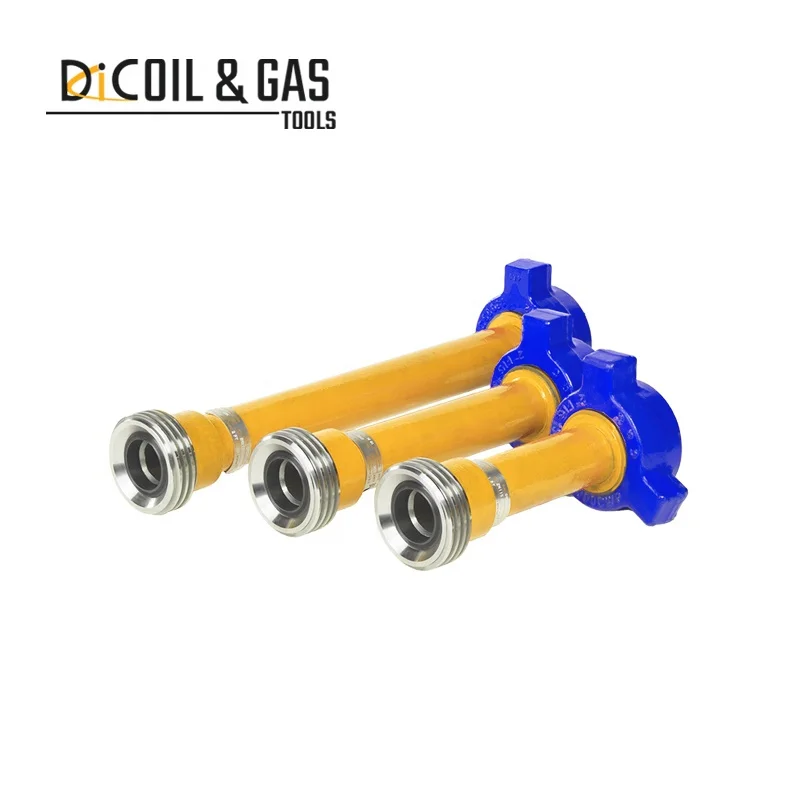
Pup joints are a type of non-standard length pipe which is often utilized to adjust tubular strings to individual requirements. API casing and tubing pup joints are manufactured according to API Spec 5CT with API monogrammed, seamless oil country tubing. These joints are also used to adjust the height of full-length tubing and casing and are mainly applied as depth markers for drill strings, Products on tubing, or casing. A pup joint is widely used in the energy sector, including renewable electricity, coal, and gas. These applications include interconnecting flow lines, full traceability, and customized lengths based on the client"s requirements.
Further, the Pup Joint market is segmented by Product Type, Technology, End-User, and geography. Based on Product Type, the Pup Joint market is segmented under Crossover Pup Joint, Tubing Pup Joint, and Drill Pipe Pup Joint. Based on the Technology, the Pup Joint market is segmented under Hot Rolled and Cold Rolled. Based on End-User, the Pup Joint market is segmented under Chemical Industry, Mining,Oil & Gas, Construction, and Others. By geography, the market covers the following regions: North America, Europe, Asia-Pacific, South America, and Middle East & Africa. For each segment, the market sizing and forecasts have been done on the basis of value (in USD Million).
The key factors affecting the industry include technological advancements in drilling techniques and faster industrialization in developing countries. In addition, the rise in population will lead to an increase in the demand for natural gas and oil, which will help the pup joint market flourish during the forecast period. Growth in the demand for high-grade pup joints within various industry verticals is expected to boost the market growth during the forecast period. Additionally, the increase in energy consumption, economic development of the shipping industry, and surge in seaborne trade are the major factors driving the market.
The majority of major companies are focusing on upgrading their equipment according to market needs in the coming years. Key players are focusing on developing products that would benefit the industry in the next few years. As an example, Ace Oil Tools introduced its new Ace Splice Clamp (ASC) to the completions market. The ASC allows multiple lines to be spliced with a single clamp and protects control lines during the completion process. Ace Splice Clamps attach to tubing or pup joints, providing the same reliability and functionality that is usually offered by submersibles. The increase in launches will help the industry to grow during the forecast period.
Renewable offshore wind energy is becoming increasingly affordable, environmental-friendly and cost-effective. It will help to reduce greenhouse gases. During the forecast period, renewable energy is expected to be more affordable than existing oil and gas sources. It will act as a restraint on the global pup joint market.
A boom in demand for pup joints to be used for untapped businesses is where key players are focusing their efforts. This is leading to advancements in the coming years and giving opportunities to key players. To increase revenue generation, major players are focusing on acquiring more companies so that they can use the distribution channels of the acquired companies. This is a significant opportunity for key players.
COVID-19 has greatly affected the world economy in a negative way, which is why the pup joint market suffered a decrease in revenue. The government of several countries implemented strict regulations on pup joints, which greatly negatively affected the market. Moreover, the lockdown situation is causing industries to focus on innovations, which could help gain the attention of the majority of players during the forecast period.
By Product Type,the Pup Joint Market is segmented into Crossover Pup Joint, Tubing Pup Joint, and Drill Pipe Pup Joint. The Tubing Pup Joint segment had the highest market share in 2021. Because these pup joints are also used to handle production tubing accessories, the tubing pup joint segment is expected to have a huge demand. A tubing pup joint is a short piece of tubing that is used for spacing.
By Technology, the Pup Joint Market is segmented into Hot Rolled and Cold Rolled. The Hot Rolled segment had the highest market share in 2021.The most common type of pup joint is the hot-rolled pup joint. Steel is heated to a high temperature and then rolled into a cylindrical shape. This type of pup joint has higher tensile strength, but it is also less corrosion resistant.
By End-User, the Pup Joint Market is segmented into Chemical Industry, Mining, Oil & Gas, Construction, and Others. The Oil & Gas segment had the highest market share in 2021, and it will boost the market growth during the forecast period.As various emerging economies rely on petroleum-based products, dependence on oil & gas has increased. Petroleum is used to make various chemical products, including fertilizers, pharmaceuticals, and solvents. Private and public companies are showing interest in exploring new oil reserves to meet future demand. Investment by major companies in oil exploration is expected to boost the market for pup joint ventures.
The North America region held the highest market share in 2021.The pup joint industry is the leading revenue generator for the North American market. The growing demand for energy from the oil & gas and chemical industries in this region is driving the growth of this market. As a result of technological advancements and an increase in foreign direct investment for various exploration projects, manufacturers are also entering new markets in developing countries like Mexico and Canada.
The market"s major companies have a significant impact because most of them have extensive global networks through which they can reach their massive client bases. To drive revenue growth and strengthen their positions in the global market, key players in the market, particularly in North America and Europe, are focusing on strategic initiatives such as acquisitions, new collection launches, and partnerships.
The objective of the report is to present a comprehensive analysis of theGlobalPup Joint market to the stakeholders in the industry. The report provides trends that are most dominant in the GlobalPup Joint market and how these trends will influence new business investments and market development throughout the forecast period. The report also aids in the comprehension of theGlobalPup Joint Market dynamics and competitive structure of the market by analyzing market leaders, market followers, and regional players.
The qualitative and quantitative data provided in theGlobalPup Joint market report is to help understand which market segments, regions are expected to grow at higher rates, factors affecting the market, and key opportunity areas, which will drive the industry and market growth through the forecast period. The report also includes the competitive landscape of key players in the industry along with their recent developments in theGlobalPup Joint market. The report studies factors such as company size, market share, market growth, revenue, Product Type Typeion volume, and profits of the key players in theGlobalPup Joint market.
The report provides Porter"s Five Force Model, which helps in designing the business strategies in the market. The report helps in identifying how many rivals exist, who they are, and how their Product Type Type quality is in theGlobalPup Joint market. The report also analyses if theGlobalPup Joint market is easy for a new player to gain a foothold in the market, do they enter or exit the market regularly, if the market is dominated by a few players, etc.
The report also includes a PESTEL Analysis, which aids in the development of company strategies. Political variables help in figuring out how much a government can influence theGlobalPup Joint market. Economic variables aid in the analysis of economic performance drivers that have an impact on theGlobalPup Joint market. Understanding the impact of the surrounding environment and the influence of environmental concerns on the GlobalPup Joint market is aided by legal factors.

Pup joints are nonstandard pipes used to adjust the length of the tubular string to meet the exact requirements. In addition, the pup joints are used to change the length of the drill string for drilling operations and easy surface handling. The appearance of the pup joints is largely determined by their mechanical properties.
Further, thePup Joint marketis segmented by product type, Technology, End-User, and geography. On the basis of product type, the Pup Joint market is segmented under Crossover Pup Joint, Tubing Pup Joint. Based on the Technology, the market is segmented under the Hot Rolled and Cold Rolled. Based on End-User, the market is segmented into Chemical Industry, Mining, Oil & Gas, Construction, and Others. By geography, the market covers the major countries in North America, i.e., the US, Canada, and Mexico. For each segment, the market sizing and forecasts have been done on the basis of value (in USD Million).
Increasing consumption of natural gas and oil, technological advancements in drilling techniques, and fast-growing industrialization are the major factors contributing to the market growth. The rise in demand for high-grade pup joints from several end-use industries is expected to drive the use of pup joints. Demand for pup joints is expected to rise because of the growing demand for energy and significant investments in exploring onshore and offshore reserves by the oil & gas and mining industries. Increased energy consumption, the economic development of the shipping industry, and increased seaborne trade are the major factors driving the demand for pup joints during the forecast period.
The decline in petroleum production may hinder the market"s growth. Renewable energy will be more affordable than existing oil and gas sources during the forecast period, which will restrain the market for pup joints.
Due to COVID-19, the major end-user industries of pup joints were affected, which will hinder the demand for pup joints since the oil & gas industry is the largest end-user. COVID-19 has had a significant impact on the downstream oil & gas industry due to the significant drop in prices and reduced demand caused by the economic slowdown, which affected production rates in many countries. However, major countries such as the US and Canada implement dynamic and diverse approaches to navigate and deal with what is happening due to COVID-19. As a result, the market will experience moderate growth during the forecast period. The United States is a major revenue generator in the North American pup joint market.
With changes in energy arrangements and expanding political pressures, the market interest in pup joints and comparable items is changing. Government and privately owned businesses are showing a clear interest in finding new oil stores to meet future needs. Ventures by significant oil exploration companies are likely to support the pup joint market.
By Product Type,the Pup Joint Market is segmented into Crossover Pup Joint, Tubing Pup Joint, and Drill Pipe Pup Joint. The Tubing Pup Joint had the highest market share in 2021. Tubing pup joints are likely to have a huge demand because they are also used to handle production tubing accessories. Tubing pup joints are tubing that is short in size and operated for spacing.
By Technology, the Pup Joint Market is segmented into Hot Rolled and Cold Rolled. The Hot Rolled segment had the highest market share in 2021. Under high temperature and pressure processing conditions, the steel tube can be completely devoid of air bubbles, cracks, and porosity. It has a good mechanical effect and excellent intensity.
By End-User, the Pup Joint Market is segmented into Chemical Industry, Mining, Oil & Gas, Construction, and Others. The Oil & Gas segment had the highest market share in 2021. The oil & gas business has been positively impacted by the introduction of several drilling technologies. Due to the reliance on petroleum-based products by various emerging economies, oil & gas dependence has increased. Petroleum is used to make a variety of chemical products, such as fertilizers, pharmaceuticals, and solvents. To meet future demand for oil, both private and public companies are seeking to explore new oil reserves.
The market"s major companies have a significant impact because most of them have extensive North America networks through which they can reach their massive client bases. To drive revenue growth and strengthen their positions in the North America market, key players in the market, particularly in North America and Europe, are focusing on strategic initiatives such as acquisitions, new collection launches, and partnerships.
The objective of the report is to present a comprehensive analysis of theNorth AmericaPup Joint market to the stakeholders in the industry. The report provides trends that are most dominant in the North AmericaPup Joint market and how these trends will influence new business investments and market development throughout the forecast period. The report also aids in the comprehension of theNorth AmericaPup Joint Market dynamics and competitive structure of the market by analyzing market leaders, market followers, and regional players.
The qualitative and quantitative data provided in theNorth AmericaPup Joint market report is to help understand which market segments and regions are expected to grow at higher rates, factors affecting the market, and key opportunity areas, which will drive the industry and market growth through the forecast period. The report also includes the competitive landscape of key players in the industry along with their recent developments in theNorth AmericaPup Joint market. The report studies factors such as company size, market share, market growth, revenue, Product Type, and profits of the key players in theNorth AmericaPup Joint market.
The report provides Porter"s Five Force Model, which helps in designing the business strategies in the market. The report helps in identifying how many rivals exist, who they are, and how their Product Type quality is in theNorth AmericaPup Joint market. The report also analyses if theNorth AmericaPup Joint market is easy for a new player to gain a foothold in the market, do they enter or exit the market regularly, if the market is dominated by a few players, etc.
The report also includes a PESTEL Analysis, which aids in the development of company strategies. Political variables help in figuring out how much a government can influence theNorth AmericaPup Joint market. Economic variables aid in the analysis of economic performance drivers that have an impact on theNorth AmericaPup Joint market. Understanding the impact of the surrounding environment and the influence of environmental concerns on the North AmericaPup Joint market is aided by legal factors.
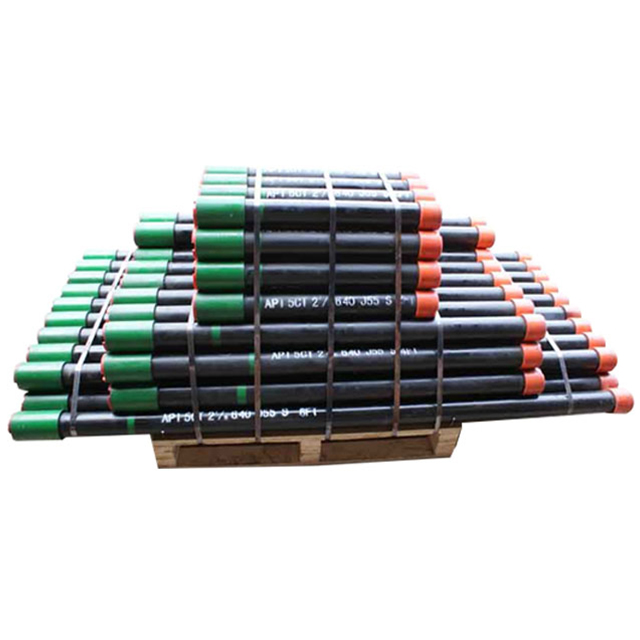
It is a short drill pipe used to adjust the overall length of drill string. The surface of Drill Pipe Pup joint looks like a smaller version of joint of drill pipe.
The minimum yield strength of Drill Pipe Pup Joint is 120000 PSI, just like the Tool Joint of the Drill Pipe. We manufacture Drill Pipe Pup Joints of all sizes, grades, and thread profiles to meet any custom requirements.
All our products have passed the ISO certification and API certifications.We have become the reliable exporter of Drill Pipe Pup Joint in India. Our products are tested numerous times under technical guidance and are made from best quality material.
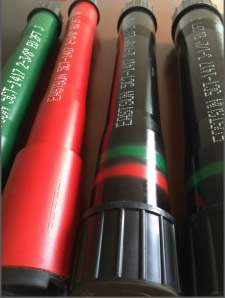
Tube Turns insulated joints are prefabricated, one-piece unions of butt-weld, forged body construction used to electrically isolate and protect pipe work and associated equipment from corrosion damage caused by stray electrical currents and unwanted electrical potentials that come to the pipeline from overhead power lines, parallel pipelines and other sources.
Isolation Joints prevent metal to metal contact across the joint; and this protection is long term and maintenance-free. Custom built to your specifications, Isolation Joints are manufactured to any diameter or wall thickness and are through-bored to allow for the passage of pigs and scrapers; and each Isolation Joint is serialized, heat code identified and traceable.
Monolithic isolation joints shall be bolt less and completely factory assembled in accordance with the appropriate requirements of ASTM, API, DIN and BS codes. All welds shall be butt weld construction. The dielectric isolation material shall be a high temp thermosetting fiberglass epoxy material. Sealing shall be by dual static, self energized “O” ring seals housed in accurately machined grooves, fully protected from cavitation in full compliance with ASME design codes. Interior and exterior coating shall be a two part epoxy with a thickness of .016 to .024” (.40-.60mm) to within 2” of each end. Each unit shall be tested for Electrical (@5kv, 25 Mohm), Hydrostatic (@ 1.5 x O.P.) and Weld (Ultrasonic/Magnetic Particle).
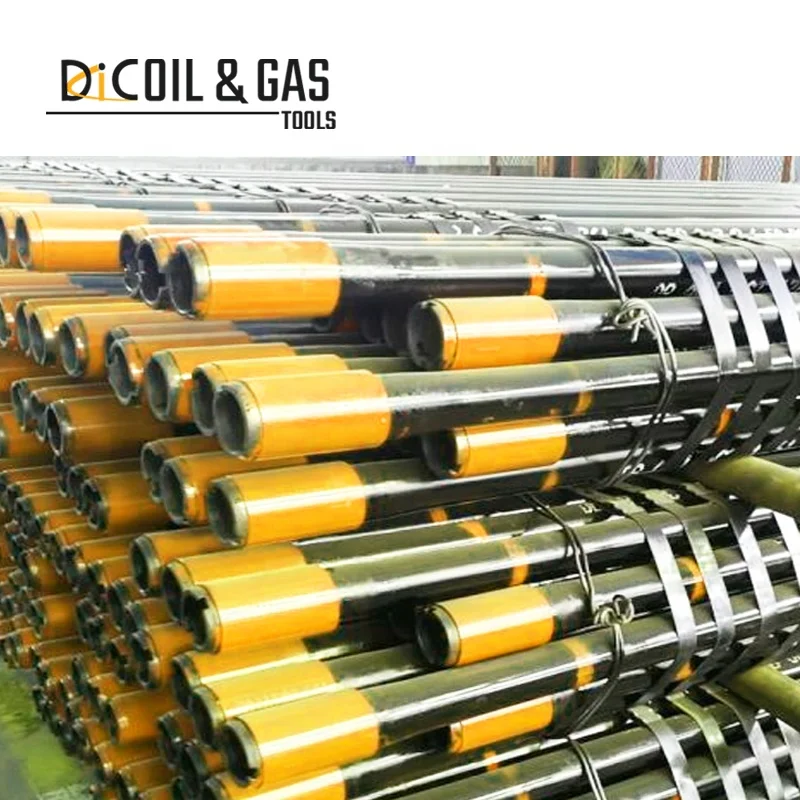
Designing the tubing for a well requires consideration of strength, load, performance, stretch, corrosion, coatings and many other factors. This page introduces each of these factors and includes some example tubing designs.
The internal-yield pressure rating for tubing is based on an American Petroleum Institute (API) variation of Barlow’s formula and incorporates a 0.875 factor that compensates for the 12.5% reduction tolerance in wall thickness allowed in manufacturing.
In general, these values should not be exceeded in operation. To be on the safe side, a minimum design factor of 1.25 based on the internal-yield pressure rating is suggested; however, some operators use different values.
In medium to high pressure wells, especially in sour service when L80, C90, and T95 API grades are used, the general stress level in the tubing should not exceed the minimum yield strength for L80 or the sulfide stress corrosion cracking (SSC) threshold stress (generally 80% of the minimum yield strength) for C90 and T95 grades.
The joint or body yield strength for the tension design factor varies widely in practice. A simple approach is to assume a relatively high design factor of 1.6 based on the tubing weight in air and ignore other loading conditions. The calculations for loads in tension are usually for static conditions and ignore dynamic loads that may occur in running and pulling the tubing. They also may ignore collapse loads that reduce tension strengths. The pulling or drag loads are not commonly known. These may be relatively high in directional wells. Typically, the highest loads in tension occur in unsetting the packer during pulling operations. In some cases, shear pins in packers result in substantial loads in unsetting that should be accounted for in design.
The condition of the tubing after several years of service in the well is another unknown that needs to be compensated for either in design or by use of a higher tension design factor. When considering all these factors and making adjustments for drag, shear pins, and collapse pressures, a minimum design factor of 1.25 in tension for pulling is suggested. However, field experience has shown, in general, that tubing in new condition (meets API minimum requirements) can be loaded in tension to its minimum yield joint strength during pulling operations without a tension failure. Tension failures during pulling operations should be avoided because the results usually are costly. It is better to cut or back off the tubing rather than have a tension failure. Table 2 shows approximate setting depths for various API grades.
A collapse resistance design of 1.1 is suggested. Collapse resistance for tubing is covered in API Bull. 5C3. Fig. 1 shows an ellipse of biaxial yield stress.
The highest tensile loads normally occur at or near the top (surface) of the well. Collapse loads reduce the permitted tension loads, as shown by the biaxial graph in Fig. 1, and should be considered when applicable. Fortunately, the casing annulus pressure is normally low at the surface; thus, collapse pressure effects at the surface often can be ignored, but not in all cases. Buoyancy, which reduces the tensile loads, is sometimes ignored on shallow wells, but it should be considered on deeper wells. A condition that frequently determines the required tension yield strength of the tubing occurs when unsetting a partially stuck packer or using a shear-pin-release type packer in wells in which buoyancy is not applicable.
In directional wells, the effect of the wellbore curvature and vertical deviation angle on the axial stress on the tubing body and couplings/joints must be considered in the tubing design. Current design practice considers the detrimental effects of tubing bending, but the favorable effect (friction while running) is neglected. Wall friction, which is unfavorable for upward pipe movement, generally is compensated for by addition of an acceptable overpull to the free-hanging axial tension. Overpull values are best obtained from field experience but can be calculated with available commercial software computer programs.
Unlike casing design, which often has numerous grades and weights in a combination design, tubing design seldom has more than two different grades or weights. Such restriction may increase the cost of the tubing string but simplifies the running and pulling procedures. Deep and high-pressure wells may require more than two weights, grades, or diameters. When more than one grade or weight are used, each should be easily identifiable. To separate different weights and grades, a pup joint or different collar types may be used. For example, one section could use standard couplings and another could use beveled couplings. Painted and stenciled markings on the outside of the tubing are inadequate once the tubing is used because such markings are often obliterated.
The use of two or three different diameter sizes is sometimes advantageous. The larger tubing size may have high-joint-yield strength and permit a higher flow rate. The largest diameter is run on the top and a smaller tubing size on bottom. In such cases, the surface wellhead valves often are sized to permit wireline work in the larger tubing to prevent operational problems. A smaller tubing outside diameter (OD) size on bottom may be necessary because of casing diameter restrictions.
The tubing OD must have adequate clearance with the casing ID. The tubing size selected should permit washover and fishing operations, in case the tubing becomes stuck and requires recovery. A wash pipe must be available that has an outside coupling dimension less than the casing drift diameter and an internal drift diameter that is greater than the tubing coupling OD plus provide a minimum of 1/8-in. clearance for adequate circulation. Also, the tubing OD should permit use of an overshot inside the casing, which limits the tubing OD size and/or the coupling OD. For example, 3½-in. OD tubing with regular API external-upset-end (EUE) couplings (OD = 4.500 in.) inside 5½-in., 17.00 casing (drift diameter = 4.767 in.) could not be washed over with available wash pipe. Even 3½-in. specialty joint tubing with a joint OD of 3.875 in. would be an impractical, risky washover operation because the couplings would require milling. Nevertheless, special circumstances may require special proprietary tubing in close tolerance applications. Special wash-pipe sizes often can be rented from the tool service companies. The tubing designer should check the success of washover and fishing operations for their particular planned condition and the area of operation.
Compare these values to the tubing performance properties. With a joint-yield strength rating, Fj, of 71,700 lbf (see relevant API tables) the design factor in tension in air is
With an internal-yield burst-pressure rating, pyi, of 7,700 psi (see tubing performance tables) and a wellhead surface pressure, pwh, of 3,000 psi, calculate the design factor in burst.
Select and order tubing material. Order per API Spec. 5CT : 9,000 ft plus 300 ft of 2 3/8;-4.70-J55 EUE-8R, range 2, seamless or electric weld, and one set of pups with standard EUE couplings. In addition, order one container of API-modified thread compound and specify delivery date and shipping instructions.
Select the tubing weight and grade. Because surface pressures of 10,000 psi are anticipated, the tubing must have a minimum internal-yield pressure greater than 10,000 psi. With a design factor of 1.25 in burst, the required minimum internal-yield pressure is 12,500 psi (1.25 × 10,000). Because the partial pressure of H2S is 0.40 psi (greater than 0.05 psi), a sour service tubing grade must be used. See NACE MR-01-75.
The obvious choice in the design is 2 7/8-7.90-L80 tubing with an inside diameter (ID) of 2.323 in. (For 2 7/8-in. tubing, the lightest weight of 6.5 lbm/ft for J55 and L80 grades do not have an adequate internal-yield pressure rating.) See minimum performance tables from API. The 2 7/8-7.90-L80 tubing has a 13,440 psi internal-yield pressure value, which is more than adequate. Because of the high gas pressure, a proprietary connection joint with 100% joint strength and with metal-to-metal seals should be considered.
Select and order the tubing material. Request that the tubing meet API Spec. 5CT. Order 14,500 ft of 2 7/8-7.90-L80 Type 13 Cr, Range 2, seamless tubing with a proprietary connection and one set of pup joints with same type connections as tubing. In addition, order all accessories with the same connection and an appropriate thread lubricant. State the required delivery and follow API RP 5C1 on tubing handling.
With an internal-yield pressure for 3 1/2-9.30-J55 of 6,980 psi, use Eq. 16 to calculate 6,980/5,215 = 1.34, which is adequate because 1.25 is acceptable.
Use Eq. 4 to calculate the weight in 11 ppg fluid, 102,300 – 16,296 = 86,004 lbf. For 3 1/2-9.30-J55 EUE tubing (100% joint efficiency), Fj = 142,500 lbf.
To control the shut-in surface tubing pressure of 12,445 psi with a design factor of 1.25, calculate the suggested minimum internal-yield pressure rating required, pyi = 12,445 × 1.25 or 15,556 psi. 2 7/8-7.90-P110 is suitable, which has an internal yield of 18,480 psi. API grades C90 and T95 could also be used, but these grades are usually more costly than P110. Because the H2S partial pressure is less than 0.05 psi, the nonsour service grade N80 and P110 can be used.
Assuming a surface-treating pressure of 10,000 psi, the tubing full of acid (gradient = 0.45 psi/ft), and the annulus full of 10 ppg (gradient = 0.52 psi/ft) salt water, use Eq. 21 to calculate a burst differential on bottom of 10,000 + 0.45 × 16,500 – 0.52 × 16,500 = 8,845 psi. The use of a design factor of 1.25 in burst will require an internal-yield pressure of 8,845 × 1.25 = 11,056 psi. The 2 3/8-4.70-N80 tubing has an API internal yield of 11,200 psi, which is acceptable.
Order the tubing to API 5CT specifications, adding a few hundred feet of each type: seamless, range 2, and a proprietary connection integral joint or threaded and coupled with metal-to-metal seals.
All auxiliary well equipment should have the same proprietary connection. Tubing should be hydrostatically tested to 80% of yield pressure. Ensure that proper running procedures are used.
A different type of tubing design problem is sulfide stress corrosion cracking (SSC). SSC and/or hydrogen embrittlement causes a brittle-type failure in susceptible materials at stresses less than the tubing yield strength. SSC is a cracking phenomenon encountered with high-strength steels in sour (H2S) aqueous environment.
Cracking also occurs in austenitic stainless steels in caustic or chloride solutions and mild steel in caustic or nitrate solutions. Susceptibility to attack of most low-alloy steels is roughly proportional to its strength. In terms of hardness, most steels are not subject to SSC failure if the hardness is less than 241 Brinell Hardness number or 23 Hardness-Rockwell C. The potential harmful level of H2S for susceptible materials has been defined as 0.05 psi partial pressure of the H2S gas phase. Carbonate-induced cracking of mild steel can occur in freshwater environments.
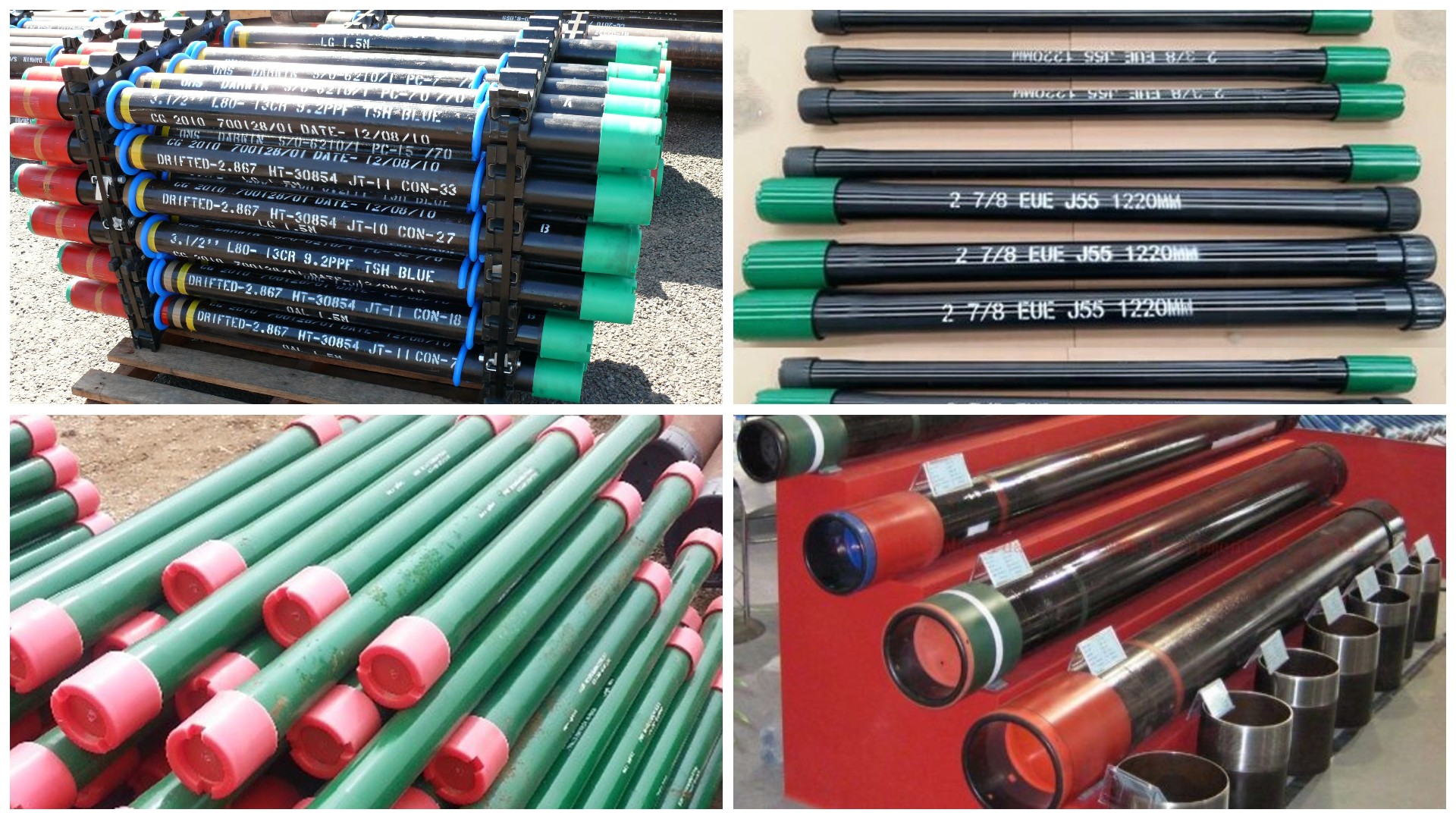
According to Stratistics MRC, the Global Pup Joint Market is growing at a CAGR of 7.3% during the forecast period. Technological advancement in drilling techniques and rapid industrialization in developing countries and increasing command for natural gas and oil are the major factors propelling the market growth. However, high costs and stringent policies related to petroleum production are hindering the market growth.
A pup joint is a pipe of non-standard length that is used to adjust the length of the tubular string to match the exact requirement. They are also used to alter the length of the drill string for drilling operation and easy surface handling. The presentation of the pup joints mainly depends on their mechanical properties.
Based on the product type, the tubing pup joint segment is likely to have a huge demand due to these pup joints are also used for handling production tubing accessories. Tubing pup joints are tubing that is short in length and used for spacing. By geography, North America is estimated to have a lucrative growth due to technological advancements and an increase in foreign direct investment for various exploration projects.
Some of the key players profiled in the Pup Joint Market include Stewart Tubular Products, AZZ Inc., Oil Country Tubular Limited, Forum Energy Technologies, Inc., and National Oilwell Varco, Sledgehammer Oil Tools Pvt. Ltd, Dmh United Steel Industry Co., Ltd, TPS-Technitube Rohrenwerke GmbH, Texas Pipe Works Inc., Anvil International, Sandong Metal Industry Co., Ltd., TaiXing Shiji Dongfang Machinery, WestCan Oilfield Supply Ltd, Mid-Continent, and Hengshui Weijia Petroleum Equipment.
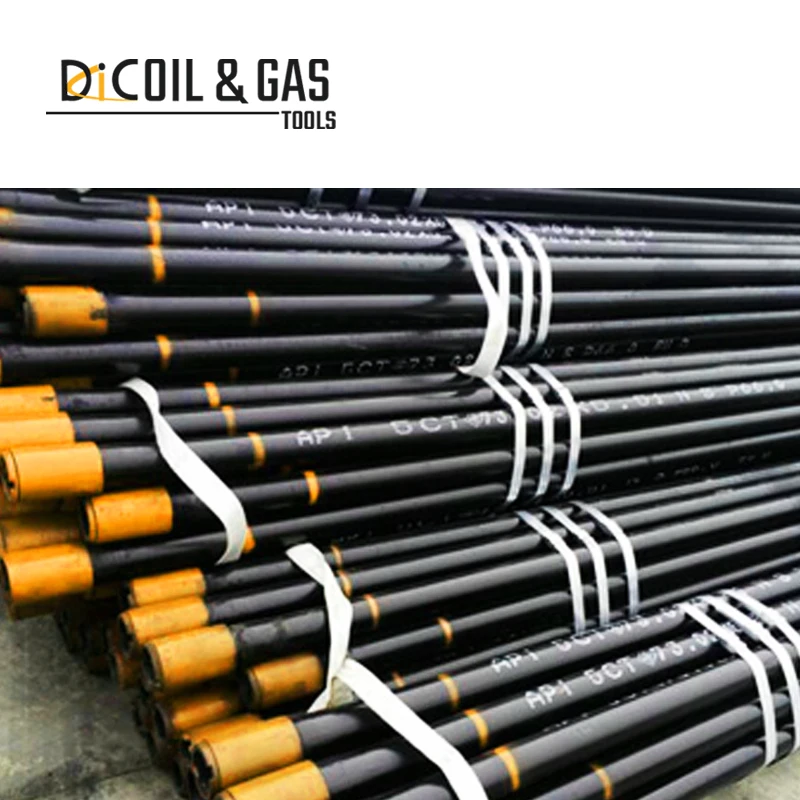
Besides casing and tubing, it also includes pup joints, coupling stock, coupling material, and accessory materials, and establishes requirements for three product specification levels (PSL-1, PSL-2, and PSL-3). The requirements for PSL-1 are the basis of this standard.
Product threading, gauging practice and thread inspection shall be in accordance with API Spec 5B. The product end shall not be hammered, but may be slightly shaped to meet the requirements of thread machining. For steel grades of C90 and higher strength, such forming shall only be carried out with the consent of the purchaser.

DIC OIL TOOLS is well-reputed manufacturer and exporter of Oil and Gas Equipment. Our products are manufactured by using best material and modern techniques, which make them extremely up to the standard in this challenging domain. The offered products are highly appreciated among customers due to their corrosion resistance, robust design, optimum finish and high tensile strength. Also, these are available in various sizes, dimensions and patterns in order to meet the requirements of customers.




 8613371530291
8613371530291